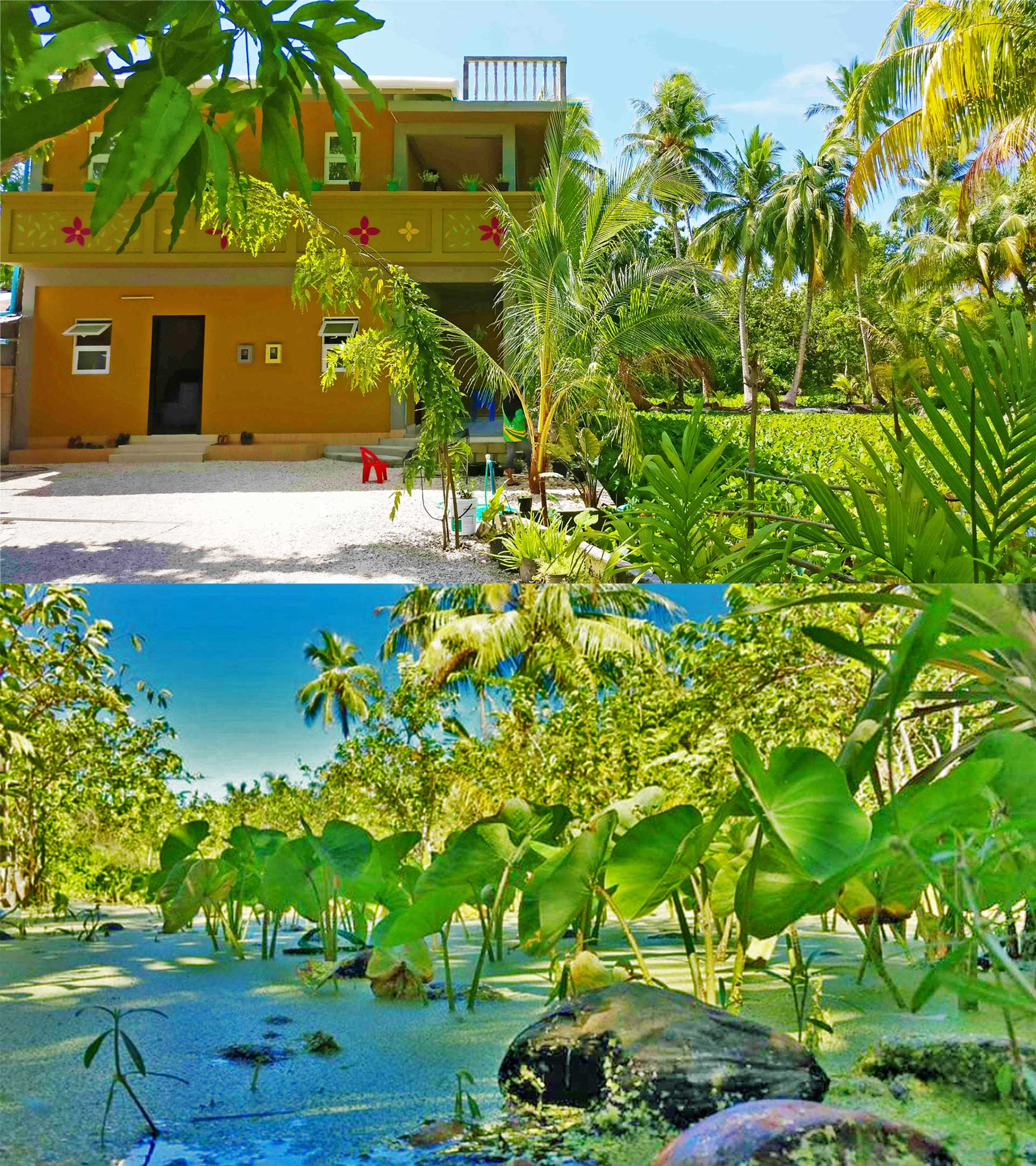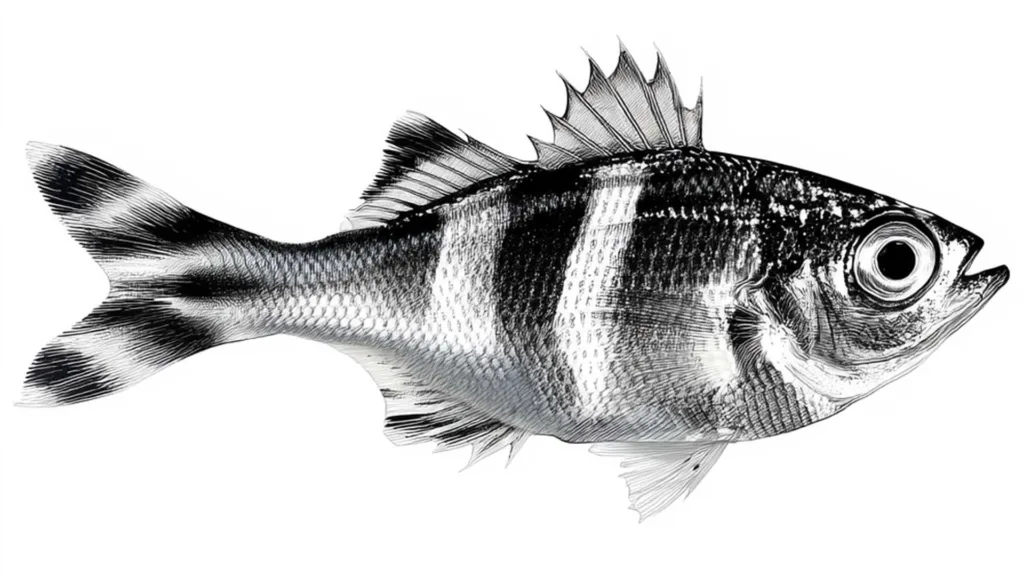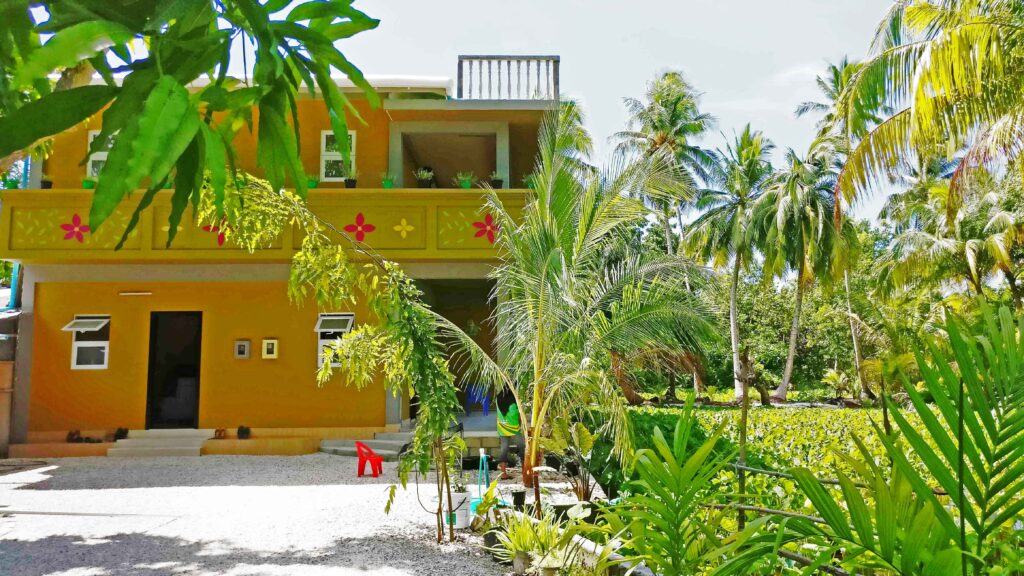
The world’s developing civilisation has affected mangroves, dense jungles, and ecosystems, resulting in deforestation and a decline in the stunning natural scenery of the Maldives islands as well. Few islands retain the natural beauty of these exotic islands.
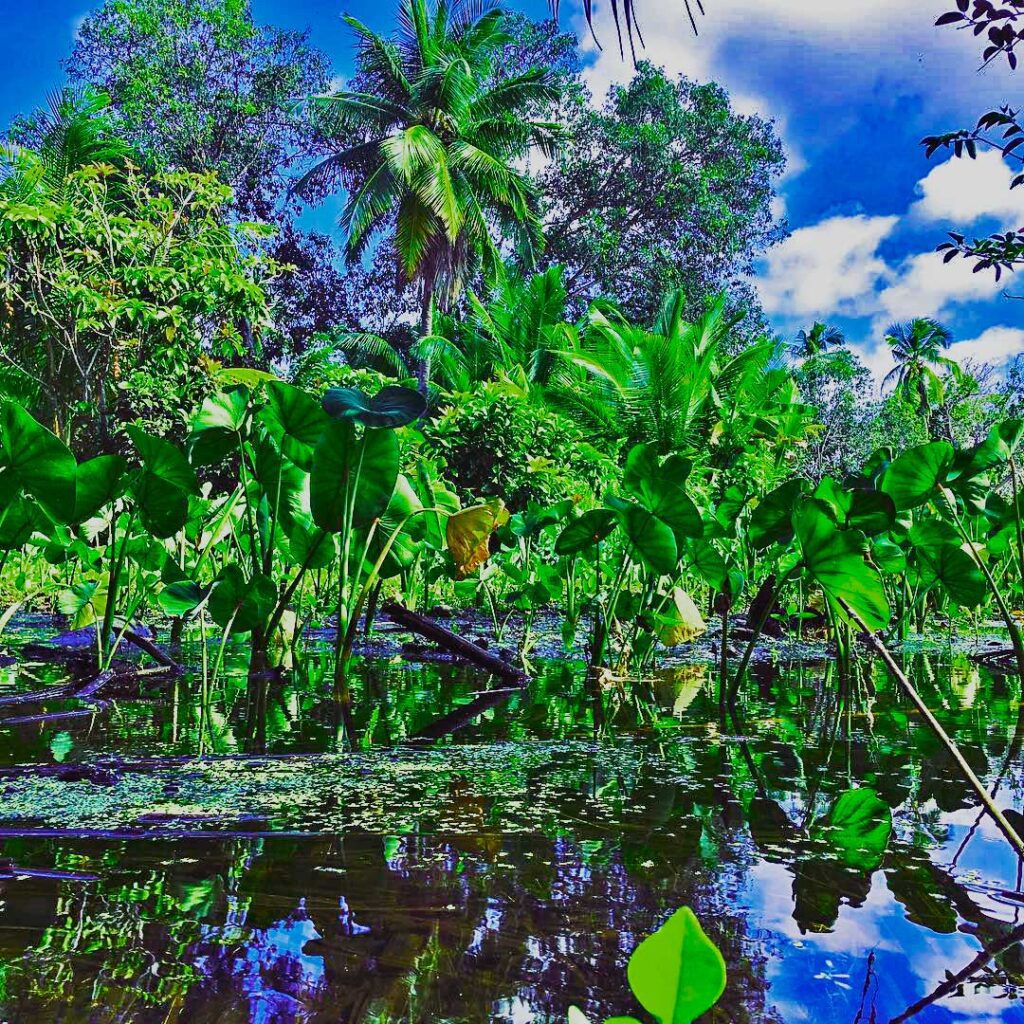
In Maldives, Fuvahmulah Island has a spectacular and ‘complete’ ecosystem that contains a rich terrestrial ecosystem as well as an incredible marine ecosystem that surrounds the island.
The natural beauty of the island has been lost due to cutting down trees and building homes in many places, but there are still many homes bordered by trees, bushes, wetlands, and fruits. Wetlands, mangroves, and taro fields are among Fuvahmulah’s most distinguishing geographical features.
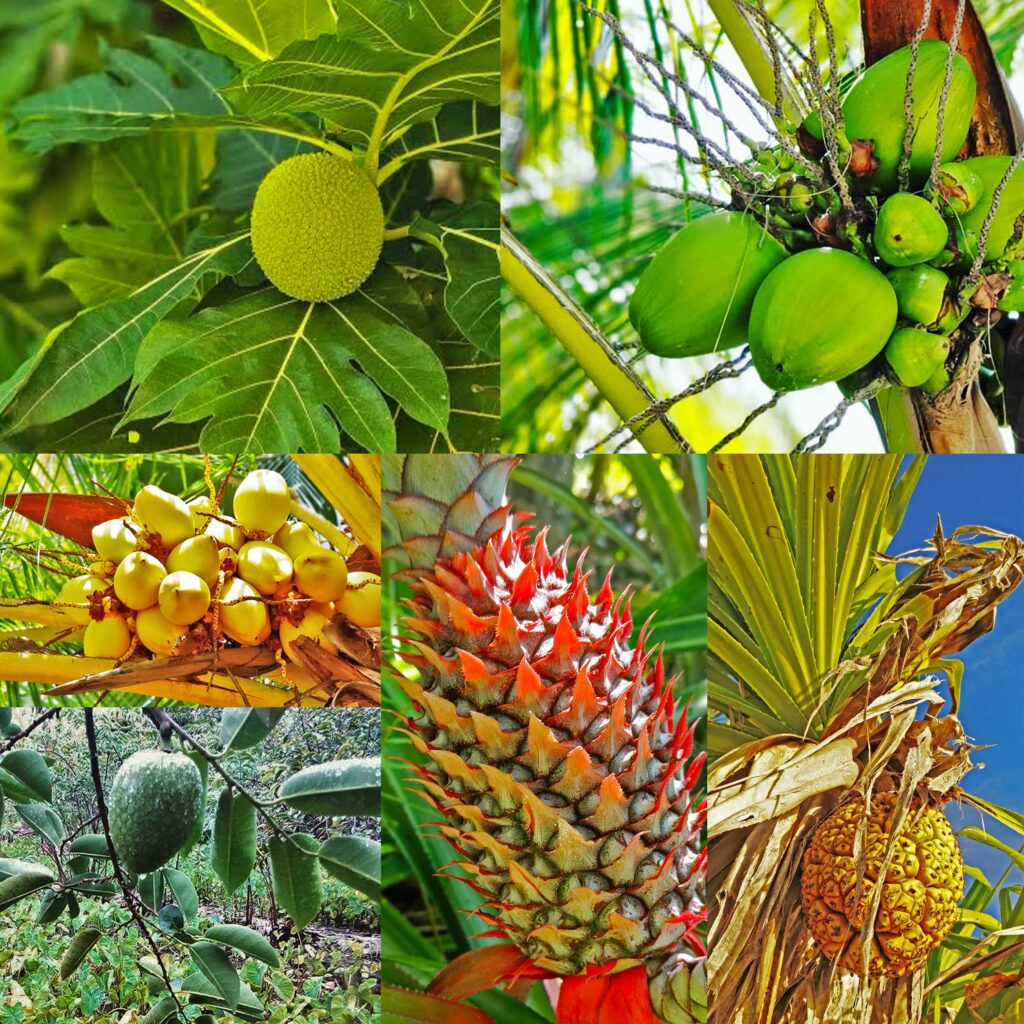
I reside in the Dhadigamu area, which features one of Fuvahmulah’s two freshwater lakes (kilhi). The lands around this lake are covered with a variety of trees and plants. Taro fields and wetlands abound on the terrain surrounding the freshwater lakes.
There are houses on the edge of taro fields (ala) and wetlands. Staying inside a house or a room within one of these houses allows you to witness the breathtaking beauty of the landscapes. The house depicted in this article, Gardenhouse, is surrounded by various plants and trees.
Early in the morning, you can hear egrets croaking and squawking, as well as herons clucking. Moorhens (walikukulhu) squawk, cluck, and cackle. White-breasted (Kambili) hens grunt and rasp.

The natural melody of the birdsongs envelops the area around the houses, calming the soul and mind. If you walk out of the house, you will see a moorhen or a white-breasted moorhen fleeing from the backyard of the house. Duckweed, or faikudhu jawaahiru as it is known in our dialect, covers vast taro fields that are visible from a few meters away when it rains. On the taro leaves, the water droplets like tiny crystal jewels. As a gentle breeze caresses the taro fields, these tiny drops gently roll from one side to the other across the smooth surface of the leaves.
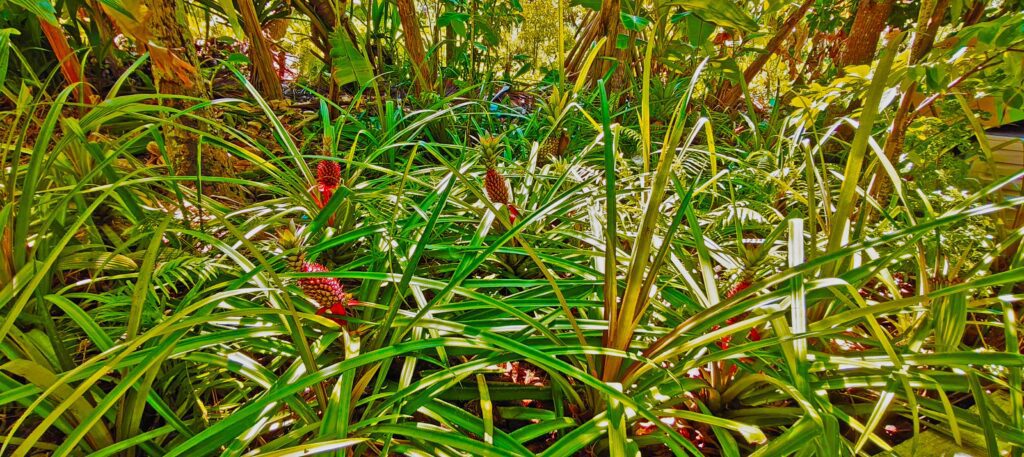
In contrast to the bright sunshine, the formation of these small plants creates a graceful texture. The taro plant’s leaves rise above the texture, revealing a long and expansive plant field surrounding the houses. The dry land masses of the taro fields contain taller plants and trees. We refer to it as feeshigando.
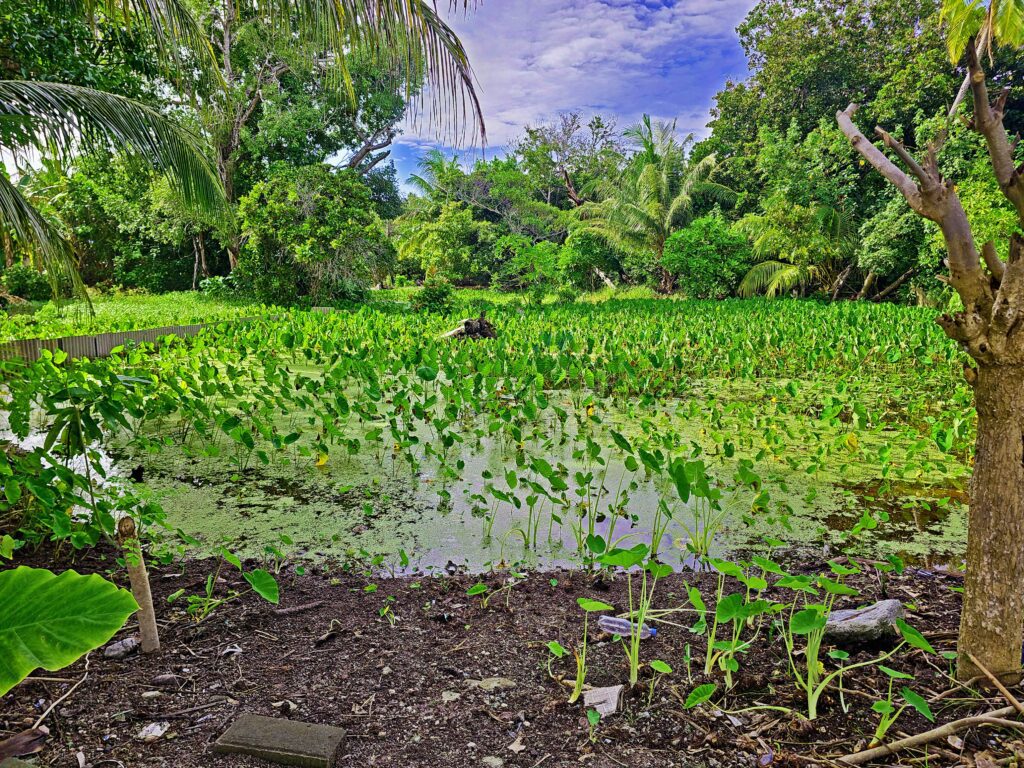
These are small landmasses that support various plants. Incredible pineapple trees adorn some of these land masses. The tight rosette of long, green, stiff leaves contain golden-yellow ripened leaves and lavender to reddish purple flowers. Pond apple trees (kalhuhuthu meyvaa) stand just above the pineapple trees. These pond apple trees are also lined up in rows to separate taro fields.
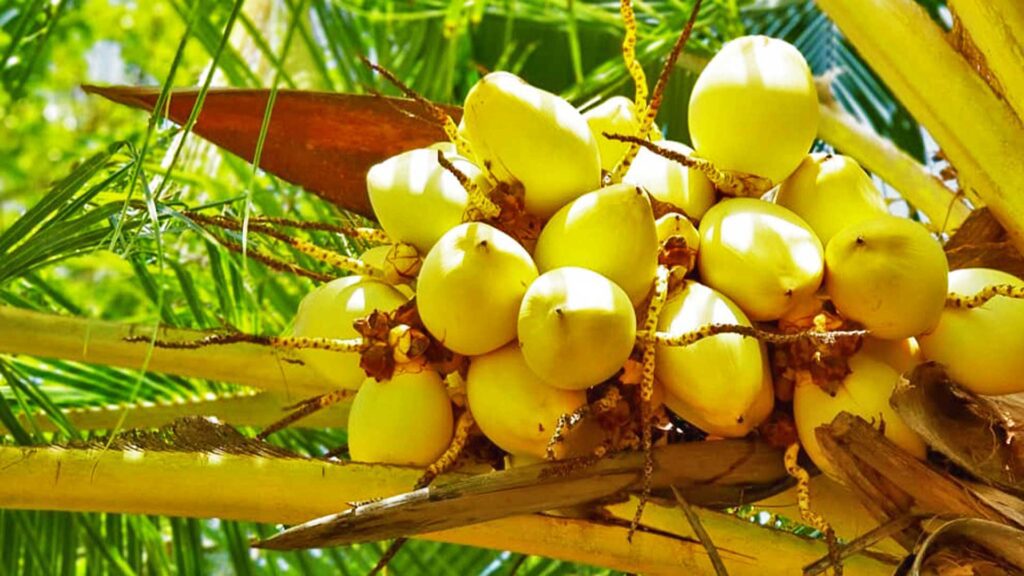
Pond apple trees stand in rows, with grey trunks and branches, and pond apples hang on with a shiny green hue that reflects sunlight. These trees grow to be between 3 and 8 meters tall.
In these areas, you can also see tall, straight curry leaf trees. In some areas, henna (heenaa fai) tree shrubs can reach heights of up to 6 metres.
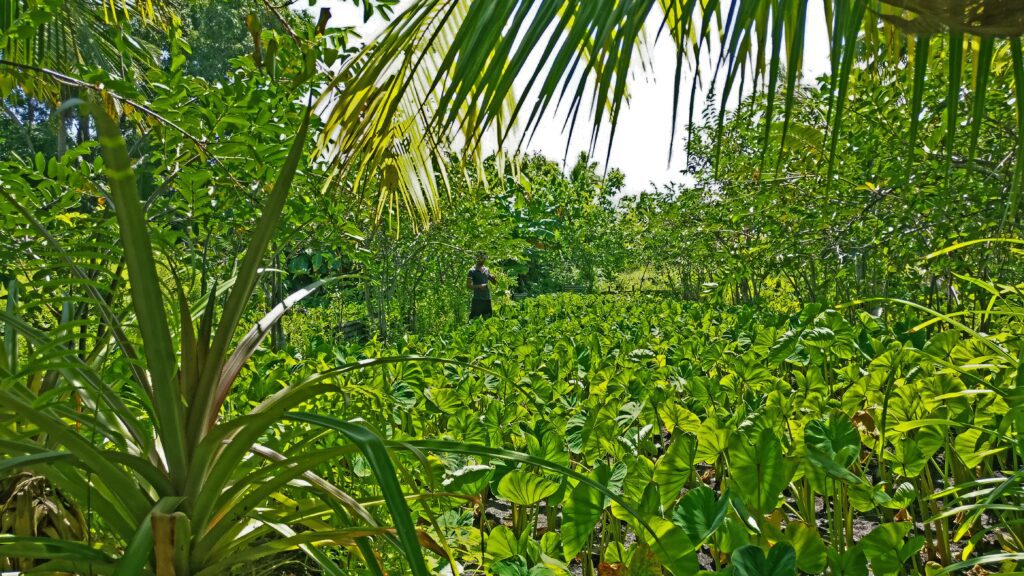
Young coconut palms (we call it kurubaa) in green, orange, or brown are scattered throughout the backyard and raised landmasses surrounding the taro fields. Light green ferns cover these land masses like mats, covering a large area. Within these sprawling trees are medium- to tall screw pine trees (kashi keyl) that provide nesting sites for egrets and herons. Sea almond (meedhili), which produces an edible nut, also grows abundantly in these areas.
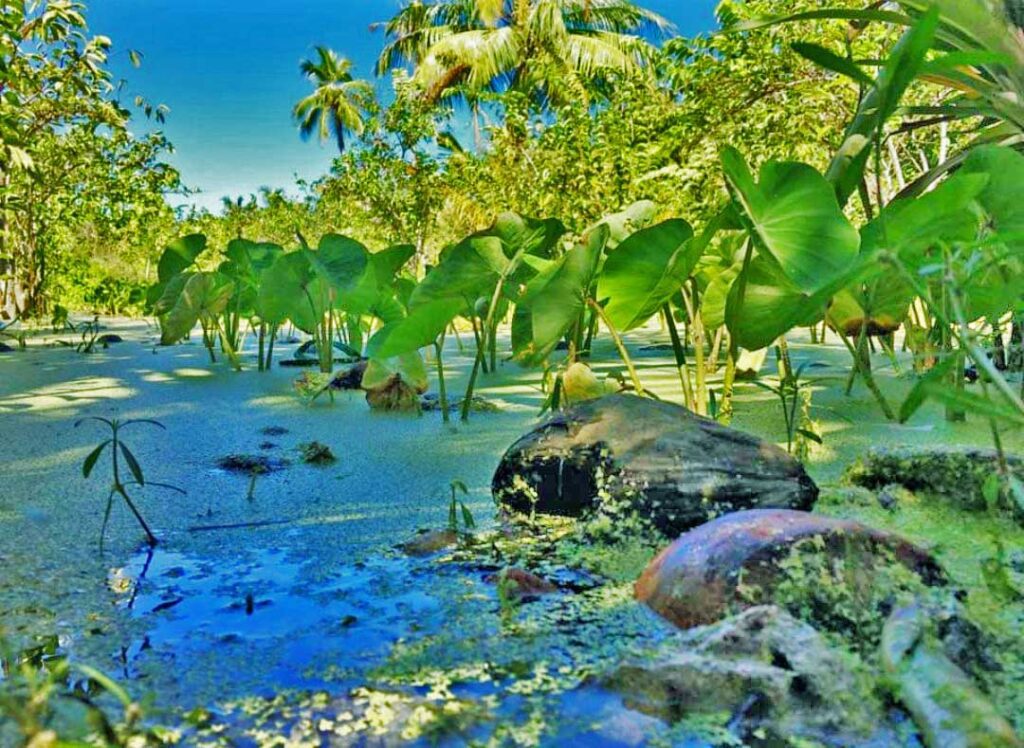
Breadfruit trees (baukeyl) with lush, dark green leaves provide plenty of shade in these areas. Banyan trees, pandan plants (raanbaa fai), sea randa (unimaa), Indian laurel (maavasho), and various other plants grow in these areas. Tall coconut palm trees rise high above the ground to guard the nearby taro fields and houses.
This is a simple yet stunning view of the backyards of most of the houses near Fuvahmulah’s wetland areas. The stunning scenery here really brings out Fuvahmulah’s magnificent natural beauty.
